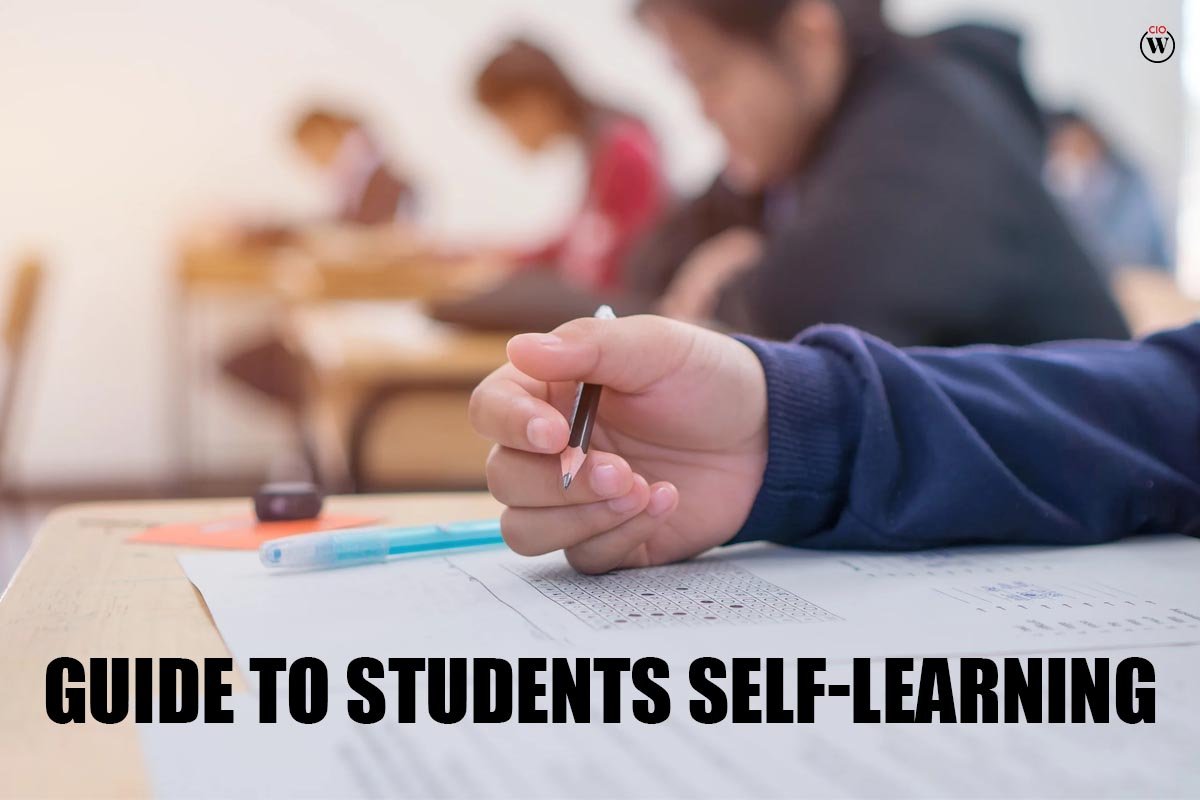Students Self-learning may help them build critical skills and information that they can use in many areas of their life. To become a constructive self-learner, you must investigate several tactics and strategies for acquiring and applying new knowledge. Knowing tactics for self-learning will help you study new topics with ease and build a lifetime passion in school.
In this post, we explain self-learning, outline the advantages of self-learning, and provide 14 ideas for using these techniques successfully.
What exactly is Students Self-learning?
Students Self-learning is the activity of acquiring new information or skills outside of a formal classroom setting. The following are some of the things to think about if you want to know more about a certain topic. Students Self-learning strategies allow people to pick their own subject of study, design their own research methods, and define the extent of their learning process.
Outside of the classroom or your job context, self-learning enables you to continue to build skills and obtain technical knowledge. It may, for example, assist you in developing a new passion, learning a new language, or gaining important abilities that will help you advance in your work.
It is a self-learning guide for pupils.
Here is a Guide to students self-learning
1. Choose your preferred learning method.
Individuals often choose to acquire new knowledge or a new skill via a variety of methods. You may identify the most effective approaches and tactics for you by examining various learning styles and understanding your personal learning process.
Consider the following sorts of students:
Social learners: These individuals like to learn in groups and process knowledge via collaborative conversation. If you’re a social learner, finding other individual learners to examine diverse views on the same issue may be beneficial.

Solitary learner: These learners like individual studying in calm situations. If you are a self-directed learner, you may benefit from reflecting on your own beliefs and obtaining access to a variety of information sources to augment your knowledge.
People with a visual learning style learn more successfully by examining visuals, such as photos, video footage, and diagrams. If you’re a visual learner, you may learn better using color-coded organizing materials and witnessing demonstrations of new concPatternnn
Auditory learner: An auditory learner receives knowledge more effectively via sound and music than through other modalities. If you are this sort of learner, you may benefit from using mnemonic devices and listening to recordings to help you recall knowledge.
A verbal learner is someone who studies new abilities via reading, writing, and speaking. If you prefer to study via the written word, documenting your learning process and reading books on your chosen subject may be beneficial.
Kinesthetic learner: Understands new ideas via physical action, particularly by physically engaging in a process. For example, if you are a kinesthetic learner, you may like to acquire new skills that require movement, such as pottery, or you may love learning while exercising.
Individuals with a logical learning style tend to acquire knowledge in straightforward stages and by pattern identification. If you are a logical learner, you may want to prepare for Students Self-learning by utilizing numerical data and an ordered structure.
Reading/writing learner: People who are reading/writing learners may choose to obtain new knowledge by studying written sources and taking notes or writing about their ideas and conclusions. They may utilize papers, books, handouts, and presentation slides to investigate and research a certain issue.
2. Choose a goal
Decide what you want to study and why you want to learn on your own. Curiosity for a subject might give the motivation to begin the Students Self-learning process. Keep track of what information interests you during the day, or choose a skill set you’d want to study. Next, evaluate how this new information may affect your life right now and how you want to utilize it in the future. For example, if you want to master fiction writing, you may choose whether you want to pursue a publishing career or keep it as a pastime.
3. Establish appropriate objectives
Set objectives for Students Self-learning journey to help you concentrate your efforts. It may be beneficial to choose particular settings in order to optimize the phases of your procedure. For example, if you’re learning a programming language like HTML, you may set a goal of creating your own website with certain functionality utilizing what you’ve learned. A particular objective might also assist you in establishing realistic benchmarks for measuring your learning progress.
4. Evaluate your fundamental competencies
Consider your main qualities, abilities, and talents. This procedure might assist you in identifying the many parts of a subject that most interest you. For example, if you’re learning how to utilize picture modification software for the first time, consider what you already know about photography as well as any other products with comparable user interfaces. Determine your basic knowledge to assist drive yourself to continue studying and boost your general confidence in your talents.
5. Create a timetable
It may be beneficial to construct an agenda for your self-learning sessions in order to build an effective strategy. Try setting realistic deadlines for yourself and calculating how long each work will take to finish. You may organize your sessions using a paper notepad, an informal to-do list, or spreadsheet software, depending on your interests. To enhance your capacity to concentrate, try studying for 40 minutes at a time with breaks in between if you schedule longer Students Self-learning sessions.
6. Study in a favorable atmosphere
Select a Students Self-learning environment that best meets your tastes and requirements. Choose a setting that supports your desire to study and assists you in staying focused. Bring tools that will aid your learning process and concentrate, such as a computer, notepad, writing instruments, or a snack. Some individuals prefer an orderly office in their house, while others may prefer a public setting such as a library or park.
7. Read books and scholarly papers
Discover books and scholarly papers written by specialists to supplement your core knowledge. Reading material from recognized professionals may give an overview of the facts you need to know and your educational trajectory if you’re learning about a new area. Look for suitable book titles at your local library or free internet databases for academic publications. Check that your study resources are current and correct. It may be good to acquire information from a librarian or another professional who can advise you on what resources to utilize.
8. Locate educational media

Finding instructional material may be beneficial if you are an audio or visual learner. Some streaming sites may feature lessons and other videos related to your subject, which you may save in an organized playlist. You might also explore listening to podcasts on your commute or while doing other things.
Here are some more examples of instructional media:
- Online lectures: Many streaming providers offer expert lectures on a variety of subjects.
- Interactive museum websites: Several museums include online Students Self-learning materials, such as three-dimensional tours of their facilities.
- Self-paced online courses: Universities and educational websites provide free courses that may help you plan your Students Self-learning process without having to enroll in a formal class or institution.
9. Take notes when studying
Taking meticulous notes while studying new information may help you remain interested and boost your understanding for many learners. You may, for example, underline portions of an article, summarize the material you learn, or make a list of themes or words to explore later. This method may be very effective for recalling information from movies or podcasts.
Here are some note-taking techniques you may use in a Students Self-learning session:
- Method of mapping: Visually arrange a text or piece of media by linking concepts with drawn lines. Depending on your tastes, you may even color-code it and add a number system.
- Method of Outlining: To arrange the tiny details of bigger issues, use indents or dashes starting on the left side of the page or screen.
- Method of charting: If the material is chronological, use categories and columns to record essential information in a chart. You may make the chart on paper or use spreadsheet software, depending on your preferences.
Know More: 10 Best Note-Taking Apps for Students
10. Go through the materials on the same day.
Select a time within the next 24 hours to review the subject you learned. This activity may help you improve your memory recall and advance in your self-learning journey. It may be good to study your content during a transitional period, such as waiting for a bus to come or an appointment to begin. You may also examine the content before going to bed or the following morning before moving on to the next phase of your objective.
11. Sort information
Create a strategy for organizing your research and other useful items that work for you. Some individuals prefer to keep information in a physical location, such as a file cabinet or folder, while others prefer to utilize a computer-based resource. It is critical to ensure that material is accessible and organized logically since you manage your workflow and the content you study throughout a Students Self-learning process.
12. Put your expertise to use
Put what you’ve learned into practice or apply your knowledge to a real-life issue. Immersing yourself in the material you’ve studied allows you to assess how much you’ve learned and may help you retain more important knowledge in the future. For example, if you’re learning a new language, you may practice with a coworker or acquaintance who is already fluent. If you’ve been studying job productivity, you may start with a small-scale endeavor, such as assisting a buddy with organizing their desk space.
13. Work along with others

Consider meeting other individuals who are in the same self-learning process as you if you are a social learner or otherwise benefit from a group environment. You will be able to explain your knowledge and point of view to someone else, which will allow you to analyze your progress and retain crucial facts more easily. You may also exchange resources and clarify information with another individual. It may be good to locate a specialized community on social media or online forums for this reason.
14. Examine your progress
Classroom lecturers often provide feedback on your learning process, therefore it’s critical that you do the same for yourself. Make time each week to reflect on your success and set new process objectives. You may also determine if the Students Self-learning process is assisting you in achieving your goals and how you might use what you’ve learned in other areas of your life. Using new computer software, for example, may boost your efficiency on other administrative or school-related chores.








